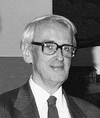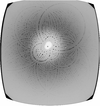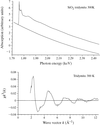issue contents
September 1999 issue

Cover illustration: Lead island on Si(111), see Schmidt, Slezak, Heun, Diaz, Blyth, Delaunay, Cocco, Prince, Bauer and Coreno, pages 957-963.
facility information
obituaries
Free 

research papers
Single bunches of synchrotron radiation in the hard X-ray regime may be extracted with a shutter involving a rotating mirror. Nanosecond time-resolved Laue diffraction experiments are feasible even in the case of very short bunch-to-bunch distances.
Be refractive lenses reduce the divergence of an X-ray beam from >11 µrad to <3 µrad, with almost no losses (∼90% transmission). Al lenses provide similar collimation but lower (∼45%) transmission.
The optical layout of a soft X-ray photoemission microscopy beamline using a full-field microscope is described. Fresnel diffraction of the synchrotron light is a nano-scale system is observed.
The soft X-ray spectroscopy beamline installed at a bending-magnet source in the LNLS is presented. A technical description of the main elements is given and some selected commissioning results are shown.
An experimental demonstration showing that a one-dimensional focus can be produced by using the principle of inclined diffraction from a perfect crystal is presented.
Demonstration of a focusing multilayer analyser for local diffraction studies in bulk materials.
A prototype of a novel pixel detector based on a gaseous single-photon counter is presented. Its suitability for advanced biological diffraction applications is demonstrated by a variety of test measurements at a synchrotron radiation source.
Daresbury Laue software and ESRF CCD yielded highly complete and redundant data to 2.3 Å from a single crystal of the enzyme hydroxymethylbilane synthase (wild type, active form). Detector dynamic range capability and Laue geometry are analysed.
Analysis of 20 K synchrotron single-crystal intensity data indicates a large enhancement of the molecular dipole moment in the solid state. The strategy for area-detector data collection with cryostat-cooled samples is discussed in detail.
Crystals of the serine kinase domain of titin grew as very thin plates. Crystallization conditions, mounting and flash freezing of the crystals were optimized to collect suitable X-ray data from a synchrotron beamline.
Microdiffraction experiments reveal the existence of several separated structural zones in keratinous tissues.
Zimm plots in the rodlike approximation indicate that repulsive interactions still affect the X-ray scattering patterns of dilute DNA solutions at low ionic strength at resolutions as high as 5–8 nm.
The structure of a crystalline mesogenic diol has been determined from high-resolution synchrotron powder-diffraction data. The disordered structure of another long-chain diol has been analyzed with XRD, IR spectroscopy and molecular simulation, revealing the character of the disorder. Both structures are lamellar-packed and layered.
CCDC reference: 618828
Sequential acquisition of energy points using energy-dispersive optics is shown to be a suitable technique for time-resolved X-ray absorption studies in the sub-second range, and is complementary to the traditional parallel data-acquisition method.
The local structures and mean-square relative displacements were determined in tridymite, quartz, stishovite, quartz-type GeO2 and rutile-type GeO2.
The feasibility of heavy-element-sensitive tomography using synchrotron radiation on centimetre-scale samples containing uranium was proven. This was performed using a detector based on a CCD camera and a scintillation screen.
short communications
The classical Hanbury Brown–Twiss experiment has been conducted with hard X-ray synchrotron radiation at the Advanced Photon Source. The measured spatial coherence area of the X-ray beam is in good agreement with the prediction based on the vertical positron beam size.


 journal menu
journal menu









































